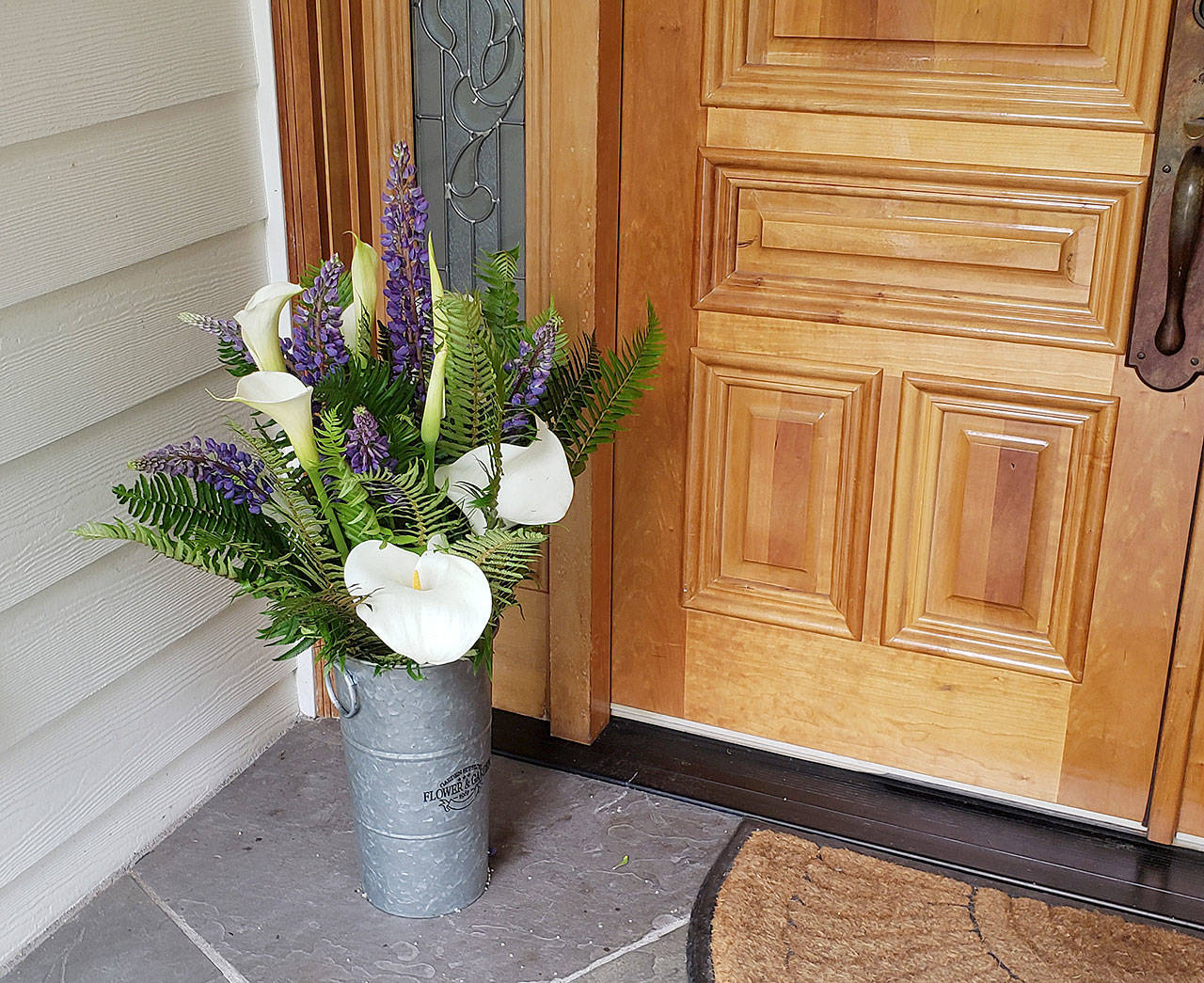I now have a new garden duty that I really look forward to every Friday.
I get to go out into the magnificent, mature perennial beds at Colette’s Bed and Breakfast and harvest whatever cut flower I desire for the grand doorway entrance.
How cool is that?
Then while watering my flower baskets and containers, as I do every morning, I was amazed at how well the petunia flowers look in the short, round vase I have them in near the phone.
I was also impressed with how long they can last.
I realize just how great it is to have and arrange your own flowers into floral displays.
With that said and since there are few rules to follow in cut flower selection, harvest and display — let us learn the inherently beneficial tricks of the cut flower trade.
Cut flowers like to be conditioned, which simply means a particular treatment is given to the flower stalks before arranging them for the express purpose of increasing their longevity.
The form of conditioning may alter, but it basically involves stripping away most, if not all, of the leaves and storing the flowers overnight in cold water in a cool, dark location.
Before we consider the various types of flowers or greens, and their general care, let us first review a few tenants for perfect petals.
1. It is best to always carry water into the cutting garden and preferably have several sizes of vases or flower cans filled with cold water.
This is to accommodate various sizes and length of flowers to be cut.
The faster flowers are put in water, the better they will perform.
2. Always cut the flower off at the best spot on the plant to encourage growth and produce more flowers, remove the complete flower head and stalk, shape the plants or reduce its size.
At the conditioning table, you will trim the flower to its optimum length and use them accordingly.
3. With few exceptions, cut the flowers as they begin to open and as other buds are showing color.
The most frequent mistake in cut flower harvest are flowers picked too late in the game.
A fully open flower will shatter in a day or two, dropping petals all over the table.
Remember, flowers continue to mature after they are cut
4. Make sure your pruners and scissors are sharp, clean and well oiled.
Preferably get a set of special flower scissors that grips the flower stock it just severed.
5. Make sure your containers are clean and scrubbed often. Bacteria clogs up the tubes that move water up to the bloom.
6. Leaves rot away, stink up the vase, cloud the water and take moisture otherwise bound for the blossoms. Remove as many leaves as possible and always remove all foliage below the waterline.
7. Harvest flowers on plants that are well-watered. A dry plant’s flower will last a few days less than those from a well-watered plant.
Now, conditioning.
Start by taking the flower stalks out of your various sized vases, trim to the size as dictated by each flower stock. Only have the stocks comprised of one branch. Branches will last for a shorter time than a single, straight lateral branch.
Again, pull or cut off all unwanted leaves and any old flower heads or seed pods.
Make sure to cut the stalks at a severe angle and place them in cold water two-thirds of the way up the stalks for 12 to 24 hours in a cool, dark, well-ventilated area.
Do not pack them tightly in the water.
The next day, re-cut the stems at least one quarter of an inch up the stem and arrange as desired.
You can re-cut the stem every day or two, which removes the callus and opens the stem back up for water transport.
Also dump and flush the water to get rid of bacteria.
For milky stem plants or those that are very hollow, char them quickly in a flame or slip their ends in boiling water. Then instantly submerge them in temperate water.
With woody stem plants, split the stem several times to aid in water transportation.
With greens, vines, foliage and fronds, first submerge the whole harvested piece for an hour in cold water. Then condition overnight as earlier specified and arrange the next day.
With herbaceous flowers, simply cut at an angle, strip leaves away and condition overnight in cold water, covering two-thirds of the flower stem.
Now become your own private professional florist, as you continue to care for your yard and garden — and please, stay well all.
________
Andrew May is a freelance writer and ornamental horticulturist who dreams of having Clallam and Jefferson counties nationally recognized as “Flower Peninsula USA.” Send him questions c/o Peninsula Daily News, P.O. Box 1330, Port Angeles, WA 98362, or email news@peninsuladailynews.com (subject line: Andrew May).

